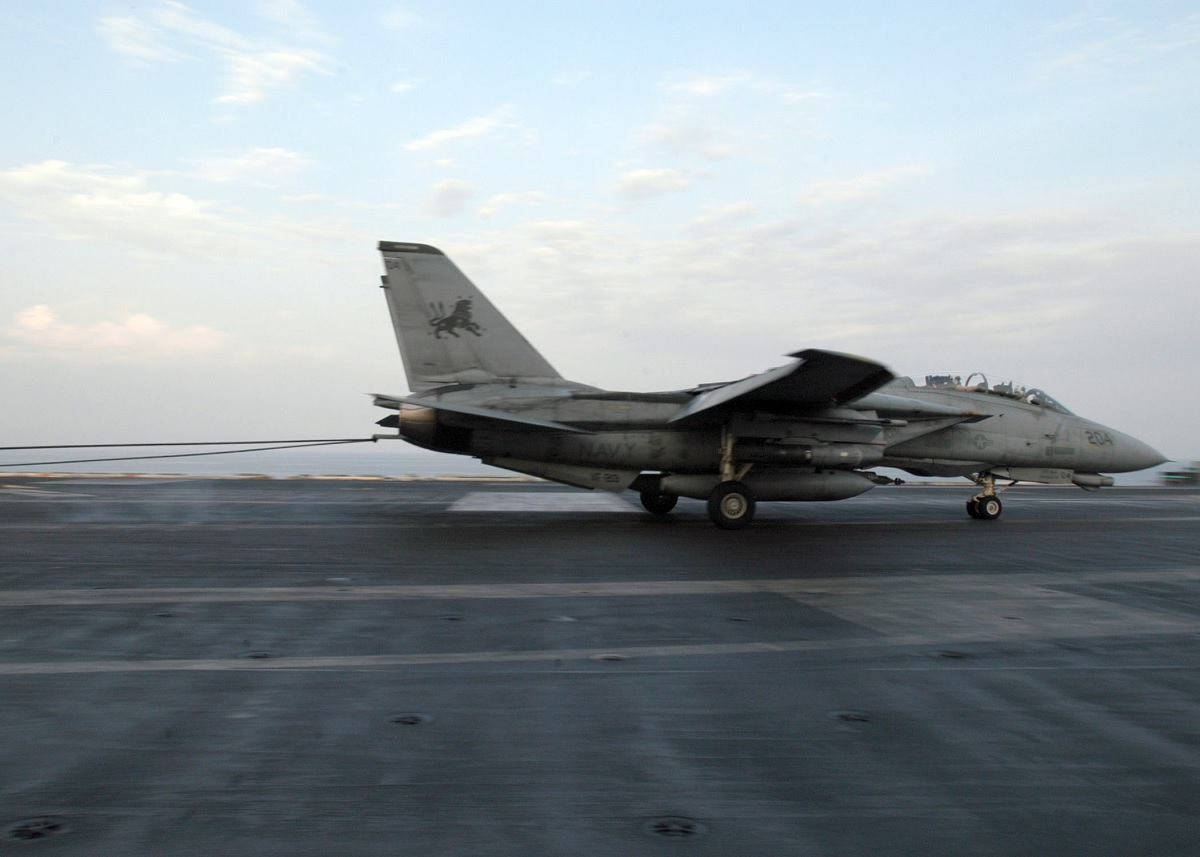While approaching for the second landing attempt, the Iraqi MiG-23 ran out of fuel, stalled and crashed only 200 metres short of the runway, killing its unlucky pilot
The primary point of disagreement between Iraq and the US, and its allies, during the 1990s was the UN Security Council’s resolutions under which Baghdad was obliged to permit inspections of its nuclear, biological, and chemical (NBC) warfare facilities by the United Nations Special Commission (UNSCOM) inspectors. Initially, Iraq accepted UNSCOM inspections, and these dismantled all of its NBC installations and weaponry. However, when the US and allies insisted on additional inspections, Baghdad refused permit these. Therefore, on Dec. 16, 1998, the US and Great Britain launched Operation Desert Fox, aiming to further `degrade’ Iraq’s ability to manufacture weapons of mass destruction.
As explained by Tom Cooper in his book In the Claws of the Tomcat: US Navy F-14 Tomcats in Air Combat against Iran and Iraq, 1987-2000, in addition to USAF aircraft operating from bases in Saudi Arabia, Bahrain, United Arab Emirates, and Oman, Operation Desert Fox involved the aircraft of CVW-3, now deployed aboard the nuclear-powered aircraft carrier Enterprise (CVN-65). Another nuclear-powered aircraft carrier, USS Carl Vinson (CVN-71), with aircraft of CVW-11 embarked, arrived a day after the fighting began. Eventually, 650 sorties against 275 targets were flown, of which 211 were hit by guided bombs: the Pentagon reported the destruction of 9 command facilities and damage to a further 11, 32 SAM sites, 13 industrial facilities and 18 factories.

In the aftermath of Operation Desert Fox, Baghdad announced that it would no longer respect both the Northern and Southern No Fly Zones (NFZs) and resumed its efforts to shoot down a Coalition aircraft. Correspondingly, the Iraqi Air Force (IrAF) began deploying its SAM sites and the IrAF interceptors within both zones. This resulted in a series of short but sharp skirmishes. For example, on Dec. 1998, Iraqis deployed three SAM sites near Mosul and opened fire at a formation of USAF F-15Es: the Americans hit back with LGBs and reported the destruction of all of the Iraqi launchers. Three days later, the IrAF deployed a single SA-6 SAM site all the way to Ali Ibn Abu Talib AB, south of Nassiriyah, and nearly shot down a Tornado GR.Mk 1 of the RAF. This time the USAF reacted by deploying a sizeable formation of F-16s — escorted by Navy EA-6Bs — to destroy the site with LGBs.
Enraged, on Jan. 3, 1999 Saddam increased the pressure by ordering several MiG-23s, MiG-25s, and Mirages into the southern NFZ. Because the jets in question operated only whenever there were no E-2Cs or E-3Cs around, the Americans and allies failed to intercept them. It thus took the setting of a carefully prepared ‘trap’ for the Iraqis to enter the engagement envelope of US interceptors.

Early on the morning of Jan. 5, 1999, two AIM-54C-armed F-14Ds of VF-213 were sent over southern Iraq, together with a division of AIM-120 armed F/A-18Cs. The Tomcats were crewed by LCDR Vince `Bluto’ Sparito and LCDR Bob ‘Jumby’ Castleton (in BuNo 163903, Modex NH107) and LT Jonathan ‘Shoe’ Shoemaker and LT Mike `BuFi’ Bilzor (BuNo 159619, Modex NH106). The Iraqi interceptors had been active over the southern NFZ since dawn, and one of their formations had been engaged by a flight of F-15Cs of the USAF: the latter fired one AIM-7M Sparrow and three AIM-120 Slammers from long range, but all missiles missed. About 15 minutes later, another Iraqi formation appeared: two MiG-23MLs led by Lieutenant-Colonel Hassan al-Hashemawi from No. 93 Squadron scrambled from Suwaira airfield, both equipped with Remora ECM-pods. As soon as the Tomcats turned into them, the ground control advised both Iraqis to turn around head back to their base, attempting to entice their enemy to follow into an ambush. The AWACS detected all three Iraqi jets and cleared the Tomcat and Hornet pilots to fire. When the F-14s engaged, the Iraqis scrambled a MiG-25 that accelerated to Mach 1.5. The Tomcats, meanwhile underway at Mach 1.2, an altitude of 12,192m (40,000ft), and about 130km (70nm) in front and north-west of the Hornets, turned into the new threat and engaged: the lead F-14D fired one AIM-54C, followed by the wingman, who fired the second. However, because of being incorrectly armed before the two jets were launched from the deck of the USS Carl Vinson, both Phoenix missiles plunged to the ground, without ever activating their engines. The Foxbat kept coming for a while longer, but the Tomcat crews were advised not to go for a merge: instead, they disengaged towards the south.
In the meantime, two F/A-18s from VFA-22 and VFA-97 were vectored north in an attempt to cut off the two MiG-23MLs that were dashing away at supersonic speed in the direction of Baghdad. Although approaching to about 130km from their opponents, the Navy pilots concluded they could not run them down: both thus disengaged towards the south.
By this time, both MiG-23MLs were critically short on fuel and Hashemawi thus led them into an emergency landing at Rashid AB, which had not been an active air base since the mid-1980s. The leader landed safely, but his wingman, Major Fallah Mandi al-Azzawi overshot on his first attempt and was forced to fly a circle: while approaching for his second landing attempt, his aircraft ran out of fuel, stalled and crashed only 200 metres short of the runway, killing the unlucky pilot. Although never claimed as an official kill by the USN, the commander of the CVW-11, CAPT James T Knight, drew a logical conclusion: ‘Screw him — a kill is a kill.’
In the Claws of the Tomcat: US Navy F-14 Tomcats in Air Combat against Iran and Iraq, 1987-2000 is published by Helion & Company and is available to order here.

Photo by U.S. Air Force, U.S. Navy and Tom Cooper

